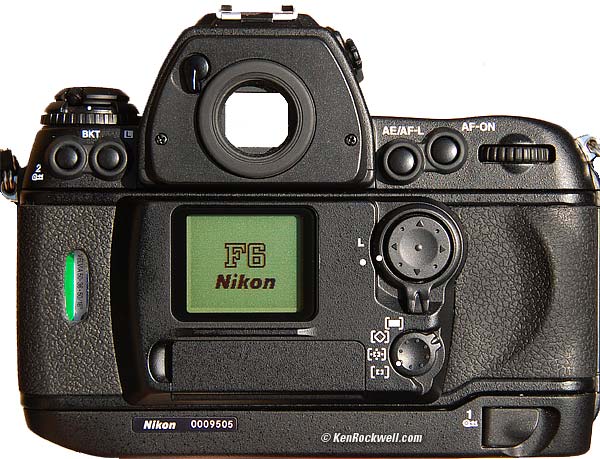


Battery options include using 640 alkaline equivalents or buying an adapter online to use LR44 type alkaline batteries.
#Who is nikon f6 marketed toward manual#
Which makes powering the camera a little bit of a hassle, and since there are no manual functions, the camera is completely bricked without power, the film advance lever wont even work. This is one of those cameras that was designed to work with the now banned PX640, 1.35 volt mercury cells. Realistically, however, in retrospect, this camera, like the others mentioned above, is really an early point and shoot that offers none of the simplicity or convenience of point and shoot cameras from the 1980s and 1990s and none of the creative control of more advanced cameras from its time. The competition in its time would have been cameras like the Canon QL17 and Yashica Electro 35 GSN, just to give you an idea of its position in the market. I paid around $50.00, including shipping, for mine about two years ago. Today you can find these cameras used for anywhere from $40.00 USD to around $100.00 USD dependent on condition. It was not a budget camera when introduced which, was reflected in its price at the time of about $900.00 USD in today’s money.
#Who is nikon f6 marketed toward Patch#
The rangefinder patch in my example is somewhat age faded and I am certain it was easier to see when new. The camera has a coupled rangefinder with parallax correction and frame lines to match the lens’s 40mm focal length. The aforementioned 40mm f/1.7 lens has has a focal range of 2.6’ to infinity. It has a Seiko leaf shutter with speeds from 2 – 1/1000 seconds and manually set ASA/ISO from 25-500. While being a fixed lens rangefinder, a form factor that was common to the period, it features a rather good 40mm f/1.7 lens constructed of six elements in four groups that offers reasonably good quality though it is somewhat subject to flare and chromatic aberration. When it was introduced in 1971 it featured, what was then, some fairly high end technology. The Minolta Hi-Matic E is an advanced consumer, fixed lens rangefinder camera from the early 1970s.


 0 kommentar(er)
0 kommentar(er)
